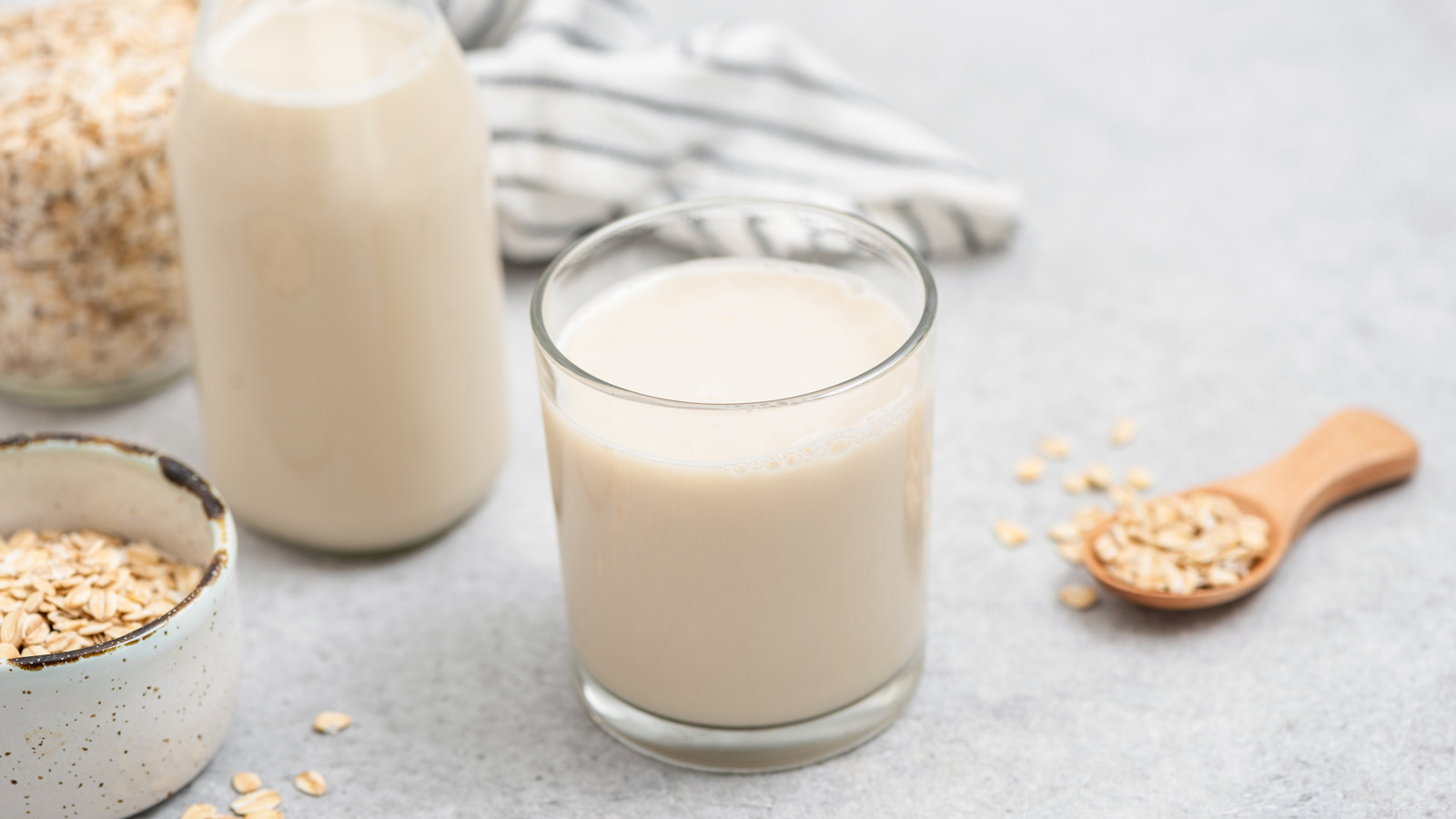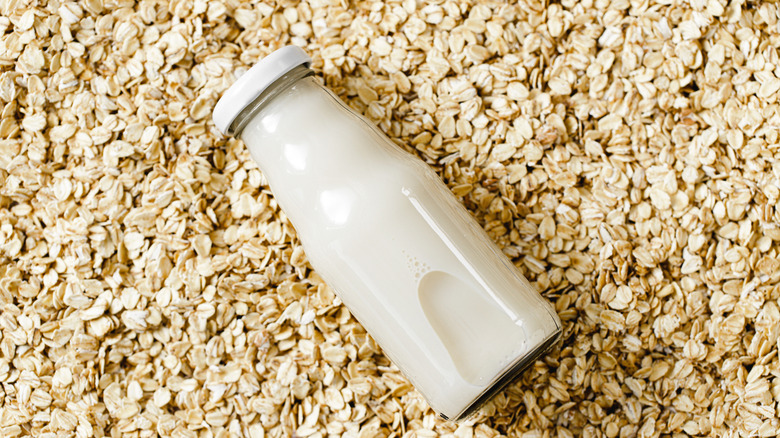Ever wonder why oat milk is so smooth and creamy? It’s not by chance! It’s all thanks to food science and the natural goodness of oats. When the oats are soaked and blended with water, their natural starches and soluble fibers, like beta-glucan, create a thick, sticky consistency. However, that sticky texture would be too thick to drink on its own, so manufacturers use enzymes to break down the starch into simpler sugars. This smooths out the texture and makes it naturally sweeter.
The result is a dairy-free milk that feels rich and velvety. Commercial brands take it a step further, adding stabilizers like natural gums or blending in plant-based fats (often canola oil) to mimic the texture of whole milk and help with foaming. Barista-style oat milk is slightly different from regular oat milk because it sometimes includes acidity regulators so the milk won’t separate in hot drinks like espresso.
What does this mean for your cooking? Oat milk acts more like dairy than most plant-based options, but with a few quirks. Its starchiness can affect thickening, its lower protein level can impact texture, and the added sugars or fats might subtly change the flavor or texture of a dish.
The best kitchen uses for oat milk
The good news is that oat milk’s creamy consistency and mild flavor make it a versatile dairy substitute that works in most sweet and savory recipes. In the kitchen, you can often swap it 1:1 for cow’s milk. But what are the specifics of oat milk to consider in your cooking?
Savory dishes like creamy soups and bechamel sauce benefit from oat milk’s natural thickness, and the plant-based alternative can even be used to improve the taste and texture of mashed potatoes. Although one downside to oat milk is that it’s lower in protein than dairy milk, meaning that it may not give you a sauce that is as thick as dairy milk would. For mac and cheese or creamy casseroles, oat milk blends fairly easily into roux or cheese sauces without separating. Take advantage of the barista blends — these help ensure that oat milk doesn’t curdle or separate when it gets hot. Avoid sweetened and flavored oat milk to prevent unexpected sweetness or notes of vanilla in your savory dishes — no one wants a sugary penne alla vodka.
Oat milk can also work great in baked goods, adding moisture and richness to muffins, cake, and bread. Baking is the time to use those sweetened oat milk options, especially if you want your baked goods to brown a bit more with the higher sugar content.






